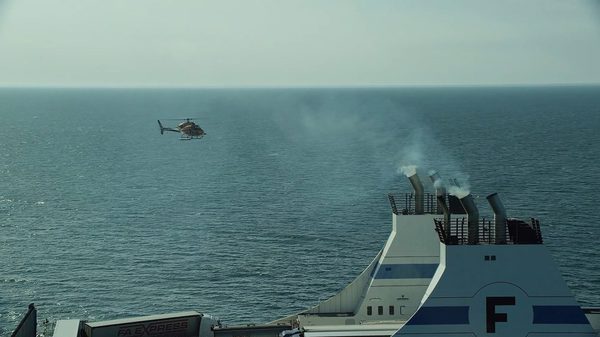‘Largest’ to-date LNG shipping methane and NOx emissions study launched to inform IMO and EU policymakers
A group of research partners have set out to measure methane and nitrogen oxides (NOx) emissions from as many LNG-fuelled ships as possible in European waters.

PHOTO: Explicit drone intercepts the exhaust plume of a ship to measure its emissions. ICCT
The International Council on Clean Transportation (ICCT) will work with environmental data firm Explicit and Dutch research organisation Netherlands Organization for Applied Scientific Research (TNO) to conduct a two-year study on methane and NOx emissions from LNG-fuelled vessels.
“Its ambition is to produce the largest, most comprehensive dataset of real sailing methane emissions from LNG-fuelled ships to date, including from their engines, fuel tanks, and cargo tanks,” they say.
Methane and NOx emissions will be gauged in vessels’ stacks and from drones and helicopters hovering above ships.
They argue that emissions data from actual voyages will provide a more accurate basis for policymakers to make informed decisions, saying data from the IMO’s Fourth Greenhouse Gas Study is “uncertain” because it is based on estimates rather than real-world data capture.
According to the IMO study, methane emissions from shipping surged 150% higher between 2012 and 2018 as a result of a 30% increase in LNG-fuelled shipping.
ICCT, Explicit and TNO argue that methane emissions can vary greatly between LNG-fuelled ships, depending on factors like engine type and load, especially as engine designs have improved in recent years. Emissions are also heavily affected by the level of leaks from fuel and cargo tanks – also known as methane slip.
To better explore conditions that cause higher and lower methane emissions, they will measure emissions from ships with different engine types split into two main categories: low-pressure and high-pressure dual fuel engines. High-pressure engines tend to have lower emissions, but this can depend on age and other factors.
Because the global fleet of LNG-fuelled ships has roughly tripled since 2012, and is expected to continue to grow rapidly over the coming years, they stress the importance of getting more accurate measures of methane emissions to expect.
Methane is a highly potent greenhouse gas with around 30 times higher global warming potential than carbon dioxide over a 100-year period, and 82.5 times higher over a 20-year period, they say, pointing to a study by the Intergovernmental Panel on Climate Change (IPCC)
The project is called FUgitive Methane Emissions from Ships (FUMES). Vessel emissions will be measured this year and published in a peer-reviewed paper by December next year.





